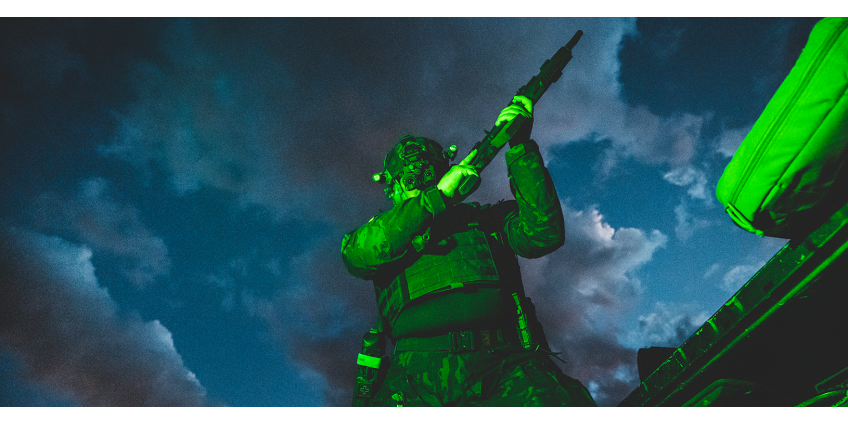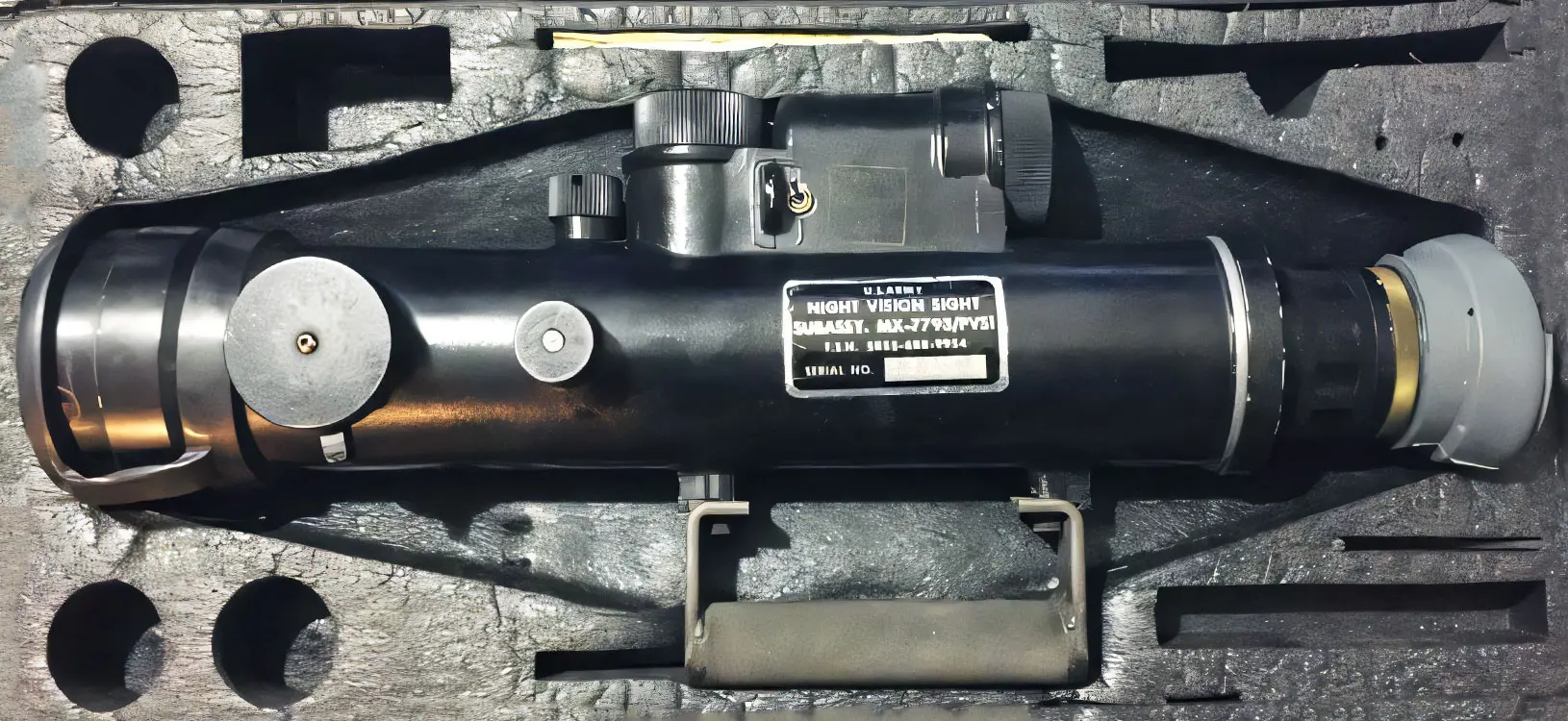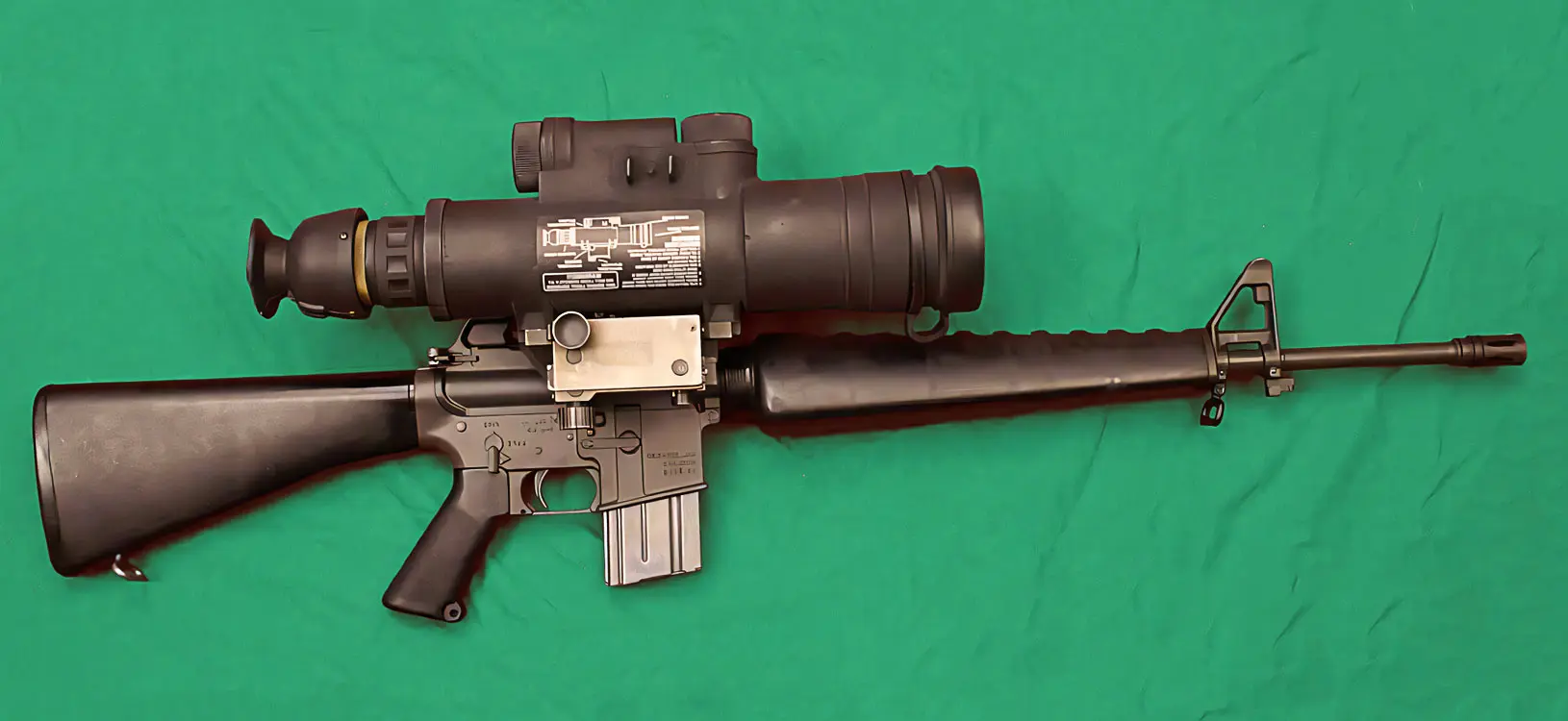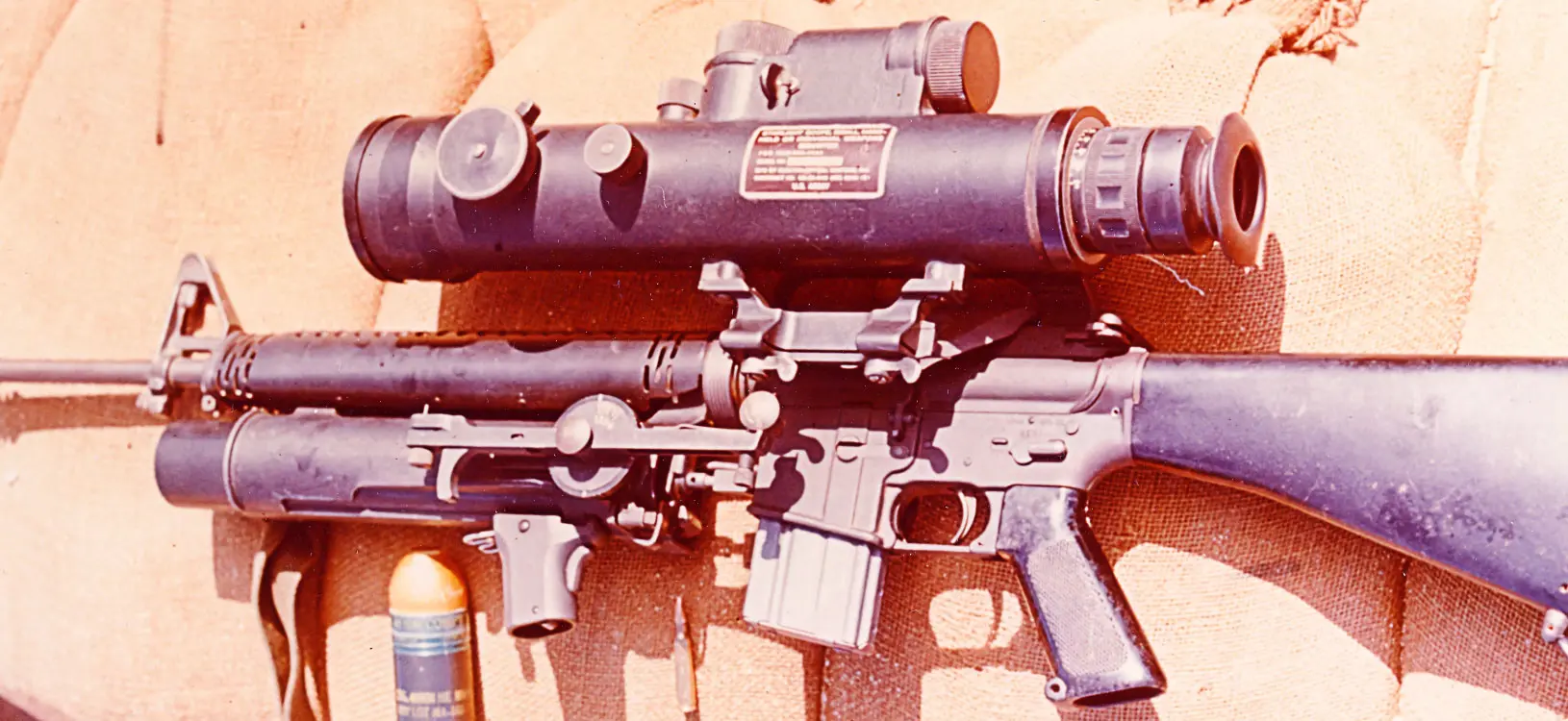
This product is not exportable outside the United States.
By adding this item to cart, you agree and acknowledge the Export Policy and confirm that you are a person in the United States with no intentions to illegally export the device.
This product is not exportable outside the United States.
By adding this item to cart, you agree and acknowledge the Export Policy and confirm that you are a person in the United States with no intentions to illegally export the device.


0

0


As history says: "The principle of working the Starlight Night Vision Scope is based on intensifying the light emitted by objects in the starry sky - the sun's side of the moon and the stars (hence the name), on a moonless night the sight is useless." And we, of course, agree with that statement. In that case, what is the difference between the Starlight Night Vision and Night Vision Scope?
Typically, the classic night vision scope switches to infrared mode with the onset of dusk. Then, infrared illumination is activated, and all the related problems appear—noise from snow, rain, insects, etc. Recently, a new technology with highly sensitive Starlight sensors has been available for night vision scopes, which does not need infrared illumination at all.
In fact, Starlight Night Vision is the latest sensor technology combining starlight and sophisticated noise reduction, which provides exceptional sensitivity and clearer night vision. This technology is widely used in night vision scopes, the most common NVDs.
There are currently three types of night vision devices, but the most popular are models that support Starlight technology. They are used everywhere and bring great benefits to people. Starlight scopes and other similar optics form an image by amplifying the available light. They do this effectively, but in complete darkness, their work becomes impossible.

Modern manufacturers produce digital and thermal imaging optics and devices that support starlight technology. The latter are the most versatile and easy to use so that they can be found more often than others. Digital models and starlight night vision devices are similar to each other. They both amplify the light collected by the lens, but they do it in different ways. At the same time, thermal imaging optics capture light radiation and heat.
Starlight scopes and similar devices are also often divided into active and passive. The former requires special infrared illumination for effective operation, helping to obtain a higher-quality image in the most difficult lighting conditions. At the same time, passive night vision scopes form the final picture only based on the collected light, which is why their efficiency in poor lighting becomes lower.
Night vision scopes use several essential technologies:
Starlight technology is a modified version of classic night vision. This means that light is necessary for the scope to work. Now imagine that there is practically no light around with the needed wavelength. The scope has nothing to reflect, which means there will be no image. What then? Then, people thought about the most logical and natural light at night - the kind of glow from the stars. Although passive night vision technology, which allows you to see in ambient starlight, has existed since the 1950s, a practical and high-quality device that meets military and civilian customer requirements has appeared relatively recently.
The Starlight night vision scope is an NVD with a reticle grid that goes for mounting on rifle weapons. The Starlight technology is a so-called "passive" mode of operation of the scope. Such night vision scopes do not use third-party illumination; they give the result due to internal light information processing. Starlight Night Vision Scope has all the advantages of a night riflescope: reticle, bracket, and recoil resistance. However, more sensitive noise-canceling sensors have been built into the device.
We've already figured out that Starlight technology has actually improved night vision—it's more sensitive, accurate, and professional. But it's still based on the night vision device. Therefore, we still take the classic night vision as the basis, with larger sensors, increased aperture, and reduced shutter speed.
The essential components of all Starlight night vision scopes consist of a lens, image intensifier tube, phosphor screen, eyepiece, and power supply. Light amplification technologies help a small amount of light energy from stars to turn into electrical energy (electrons). These electrons increase exponentially through electrical and chemical processes. Then, they encounter a fluorescent screen, which turns the electrons back into photons to reproduce an accurate image even in total darkness.
This is how the NV Starlight Scope works in passive mode when no additional means of illumination are used. At the same time, the light amplification factor of the Starlight technology can reach 30-50 thousand from the original. If you prefer the Starlight night vision scope, this lets you see much better on a starry night.

The objective is the critical element of the design in all starlight rifle scopes and similar night optics. It captures the available light from various celestial bodies and artificial lighting devices. The objective focuses the collected rays on the photocathode, after which they undergo multiple transformations.
This design element is an essential link in the entire chain of light flux transformation. Its photocathode makes it possible to transform photons into electrons, which then pass through the image-intensifier tube and are accelerated many times. This occurs due to the effect of electric current, which helps to activate the interaction between electrons with different charges. This method of light amplification is not ideal. During all transformations, distortions appear that reduce the quality of the final picture.
The image-intensifier tube design was supplemented with a special microchannel plate to eliminate defects. This plate appeared in second-generation devices and partially solved the problem of distortions. This result was achieved because this plate made it possible to simultaneously accelerate electrons and increase their number.
The power source plays a vital role in light conversion. It creates electrical impulses that help accelerate electrons in the image-intensifier tube. This design element also makes the device's display possible. The power source was far from perfect in older models of night vision devices. It was gradually modernized, which made it possible to increase its efficiency and eliminate the noise it produces.
The phosphor screen is an equally important element of the design of starlight night vision goggles and other similar devices. It is where the accelerated electrons coming out of the image-intensifier tube hit. Due to this, they are transformed into photons of light and allow the final image to be formed. Most often, it has a green color, which our eyes perceive better than any other shade.
All classic night vision devices have an eyepiece. It is used so that the user can see the image projected onto the display. This design element can have different shapes and sizes. Also, in most modern optics models, the eyepiece is supplemented with diopter adjustment, thanks to which each user can adjust the optics depending on their visual acuity.
This design element is present only in active night optics. It illuminates the surrounding area with infrared light, which is invisible to the human eye. Thanks to the presence of an IR Illuminater, it is possible to improve the image quality, achieve maximum detail and increase the device's range.

Starlight night vision scopes are used to observe and identify objects and targets only at night. They are widely used for covert surveillance in dark areas.
Categories of application of Starlight night vision scopes:
They are common in the armed forces, security services, border guards, security installations, and open perimeters. In hunting, they are used to observe the behavior of animals, tracking animals - at night. They are handy for searching for nocturnal animals - wild boar, coyote, bear, etc.
To understand a starlight scope, you don't need a special education and study information from dozens of sources. Rereading our article is enough, and all the questions will disappear. The starlight scope consists of 6 essential elements that interact with each other and make it possible for the device to operate in low-light conditions. This device is effective in most cases, but in the absence of lighting, it cannot operate without the help of IR illumination. Despite this drawback, the scope of the Starlight Night Vision is actively used in various fields of activity, helping the military and civilians achieve their goals.
Starlight Scope is an optical device that supports night vision technology and uses the light of the Moon, stars, and other celestial bodies to form an image.
Starlight Vision is a technology that amplifies the light coming from various objects in the night sky.
During the Vietnam War, American soldiers actively used AN/PVS 2 Starlight sights. They were installed on M48 tanks of the A3 modification and some other military equipment models.
Modified: Aug 30, 2024 | 04:03 pm
Table of contents
Featured Articles
How to choose a thermal rifle scope? The principle of operation of a thermal imaging sight and options for its use. Description of the best models of ..
Which thermal scopes are the best for hunting? We will answer this question. Our TOP 5 best thermal scopes. What are their functions, how do they work..
If you decide to buy a night vision scope but don't understand all of the instructions, this article will help you. Here we will tell you about all th..
In this article we review the 4 best sights for hunting coyotes. And we also tell you what equipment is best to take with you on a dangerous hunting t..
A good rifle scope allows you to get a clear and contrasting image in all light conditions providing a high quality color rendering. Binoculars and te..
Riflescopes are incredibly complex devices that rely on a myriad of moving parts and principles to function properly. We believe it is important to ha..